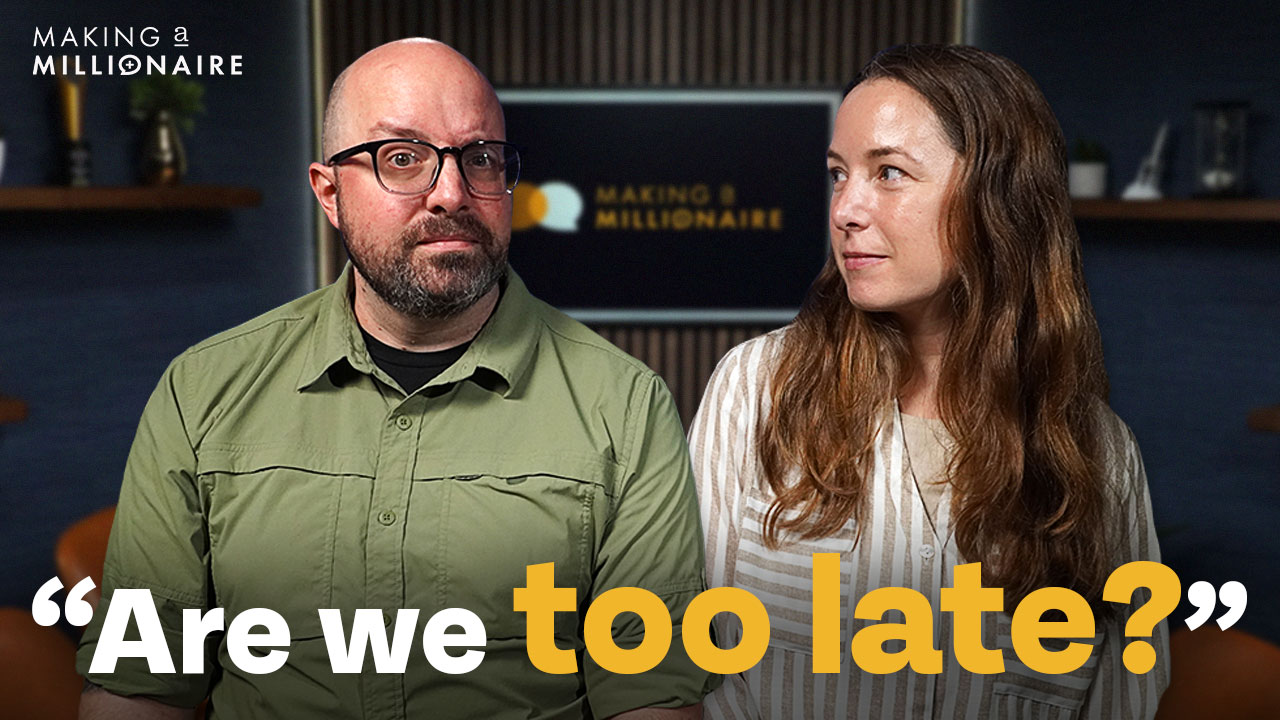You want to talk about the next decade? Let's discuss the 40s. We've graduated from the messy middle, and now you're in your 40s. I'm also in this decade, and what I find interesting is that it's the first time I feel like I can breathe a little. In my 20s and 30s, I felt somewhat constricted or financially strained. I practiced what's called "forced scarcity," where I squeezed myself every year, focusing on saving more with each pay raise. The goal was to save hard between our 20s and 40s, so we could potentially ease up on savings in our 40s and enjoy the great big beautiful tomorrow. This is when the dividends and the payoff for previous sacrifices start to come in. We'll see that with Manny the Mutant in a minute as well.
Now, let's talk about each of the three tax buckets. First, on the tax-free side, if you've been contributing to a Roth IRA, you're likely still doing it in your 40s. If you were eligible for backdoor Roth contributions, you're probably doing those as well. Since your children are getting older, you'll probably stick with the health insurance plan you've been on. You should already be familiar with and practicing these tax-free strategies. They shouldn't be new discoveries for you.
This is also the phase where you transition from tax-free to tax-deferred on your employer plan. Considering the tax code, you'll likely move from Roth contributions to tax-deferred contributions to take advantage of current year deductions. As a result, your tax-deferred account will start to grow significantly in your 40s. You may even be approaching the maximum contribution limits, which currently stand at $22,500 for someone in their 40s. Your accounts will experience substantial growth during this phase, but there's a cautionary tale.
I want to caution you because many of you Financial Mutants out there get excited about the tax benefits of tax-free and tax-deferred accounts. There are indeed huge benefits in tax-free growth and current year tax deductions. However, there can be too much of a good thing.
Because I've encountered cases where people approach us ready to buy a car, but they struggle with paying cash for a luxury car despite having high incomes and substantial net worth. This is especially true for those who have prioritized loading up their tax-favored accounts. They end up lacking funds in their after-tax accounts, except for emergency reserves. This becomes problematic, especially for individuals in the FIRE movement (Financial Independence, Retire Early), who plan to leave the workforce before traditional retirement ages.
It's essential to have a plan for building up after-tax accounts to ensure liquidity and the ability to cover expenses in retirement or make significant purchases like cars or second homes. If you anticipate leaving the workforce before age 59 ½ or, particularly, before age 55, it can be costly to access funds from retirement accounts. Therefore, the after-tax bucket becomes crucial in providing the necessary bridge of liquidity. In the context of the
Financial Order of operations, step seven, hyper accumulation, emphasizes the importance of the three-bucket strategy. If you need easy access to assets due to early retirement, don't overlook the value of this step.
Now, let's revisit Manny's situation. Manny, who started investing 25% of his gross income at age 25, never intended to retire in his 40s or 50s. He planned to work until age 65, not aligning with the FIRE movement's early retirement goal. Manny's decisions on how he accumulates wealth are specific to his long-term plan. Starting with an annual income of $50,000 at age 25 and receiving 5% pay raises annually, Manny has consistently followed the
Financial Order of Operations. By contributing 6% to his 401(k) and receiving a 3% employer match, he has opted for a conservative investment approach, assuming an average annual return of 9.5% at age 25 and progressively decreasing each year.
So, as Manny's investment portfolio becomes more conservative, the rate of return gradually decreases. However, by the end of his 40s, his income has grown to $161,000 with consistent five percent pay raises. The remarkable thing is that many people reach seven-figure millionaire status in their 40s, typically around 27 years after college graduation. Manny follows this trend and, by age 45, has achieved this milestone through diligence, discipline, and consistent saving.
Manny's impressive wealth accumulation includes nearly $1.5 million in tax-free Roth accounts, offering him the opportunity to enjoy a tax-free retirement. While his tax-deferred account is still a smaller portion, around $193,000 out of his total portfolio of $1.6 to $1.7 million, the after-tax account holds only $22,000. This is because Manny maximizes the tax benefits provided by the government to incentivize future-oriented financial planning.
Even at age 49 and with an increased income, Manny continues to contribute to his Roth IRA, potentially utilizing the backdoor strategy if necessary. He also contributes modestly to his after-tax account while still prioritizing his Roth 401(k). By adhering to the
Financial Order of Operations, Manny's journey to abundance is becoming more exciting. He transitions from having a $530,000 portfolio at age 39 to nearing the multi-millionaire mark at almost $1.7 million by age 49.
As someone in my late 40s, I often engage in discussions with neighbors about investment performance, especially during prosperous market periods. It's a conversation I wish 49-year-old Manny could have with his 29-year-old self, whose account was worth less than $100,000. He would encourage his younger self to stay the course, assuring him that his account would grow significantly to $500,000 by age 39 and then to approximately $1.6 million by age 49. This is the power of staying committed and not succumbing to distractions from the financial media or societal pressures to spend excessively.
Manny has also reached the status of a prodigious accumulator of wealth during his 40s. All it takes is staying the course and resisting temptations. The journey to financial success is incredible, and anyone can embark on it by utilizing resources like the
Net Worth Tool available at
learn.moneyguy.com. Start small, make incremental decisions, and follow the path Manny took. You'll look back in a few decades and go, "Whoa, this is what I'm talking about! This is true wealth building." It doesn't matter where you come from or your humble beginnings. Success and money don't discriminate. Just let the money do the hard work for you. Your army of dollar bills can make it that easy, and you have to believe in that.














